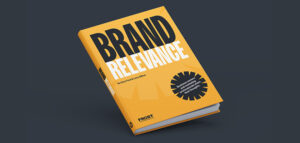
Black Friday Marketing Strategy: Inspiring Ideas, Campaigns and Best Practises
As the holiday shopping season approaches, Black Friday is poised to be again a major sales event. According to Salesforce, 63% of consumers plan to shop on Black Friday in 2023, highlighting the significance of this event for businesses of all sizes.
That means the Black Friday marketing area has become a real battleground, with brands trying to outdo each other in clever ways. It’s like a race to grab the largest piece of the pie, and those who plan early often come out on top.
What’s Inside
- Black Friday E-commerce Strategy: Winning in the Online Shopping Rush
- Marketing Strategy for Black Friday
- Black Friday Email Marketing Strategy
- Black Friday Social Media Strategy
- Black Friday Advertising Strategy
- Black Friday Advertising Examples: Inspiring Campaign Ideas
- Conclusion
Black Friday, the day following Thanksgiving in the United States (as you know), has evolved into a global shopping phenomenon, marking the commencement of the holiday retail season. We’re talking about billions; just in 2023, U.S. consumers spent a record $9.8 billion online during Black Friday. As you can guess, especially mobile shopping played the best part. So much so that, in the same year, 51.1% of Black Friday sales were conducted via smartphones.
These spikes highlight how crucial it is for digital marketing agencies to create winning plans to drive sales and grab consumers’ attention during this time. To stand out in the competitive Black Friday landscape, marketers must employ innovative tactics and promotions.
Let us examine best practices and real-world examples of how marketers can create effective Black Friday campaigns that increase sales and foster customer loyalty.
Black Friday E-commerce Strategy: Winning in the Online Shopping Rush
Black Friday is not another bad hair day on Wall Street. It’s the term used by American retailers to describe the day after the Thanksgiving Holiday, seen as the semi-official start of the Christmas shopping season.
Evan Davis, BBC News
Black Friday started as a tradition in physical retail stores, but in today’s digital era, it’s become a game-changer for ecommerce. Black Friday marketing strategies have evolved beyond the old norms and now rule the online shopping world.
In other words, Black Friday is an important period not only for shoppers but also for online retailers and e-commerce sites and should be evaluated very well. Being prepared for Black Friday and Cyber Monday with targeted promotional activities and remarkable campaigns can increase your Black Friday sales significantly.
So, here is the biggest question: How to prepare for Black Friday ecommerce?
The busiest sales time of the year brings many potential customers to your online shop with well-organized & designed Black Friday marketing strategies – from social media management to content and email marketing. And yes, the right steps will direct you to turn this density into a great advantage.
For this reason, you must determine the promotion and advertising strategies you will follow during this period, in light of the data obtained from your market research. The sooner you determine this roadmap, the more flexible you will be against new conditions.
Certain strategies can be applied while preparing your business for this holiday shopping season.
During the Black Friday sale, your sales and average order will increase compared to regular conditions. In this process, strengthening these sales and orders with some strategies will increase your earnings noticeably.
The most effective Black Friday marketing strategies for ecommerce can increase your sales during this discount period.
Marketing Strategy for Black Friday
When considering that the average consumer spends $335 on Black Friday (according to Deloitte Insights), it is possible to say that your sales and average order will increase compared to regular conditions.
In this process, strengthening these sales and orders with some strategies will increase your earnings noticeably.
The most effective Black Friday marketing strategies can increase your sales during this discount period. Before jumping into the suggestions, let’s take time to remember the great cameo of Lindsay Lohan with her Black Friday Deals video:
Make a Fuss
The Black Friday sale is valid for a limited time. Those shoppers who do not take advantage of Black Friday deals during this period may not catch this opportunity again soon. In addition to the time limit, including a limited number of products in the sales will encourage customers to buy as soon as possible.
Hint: You can also create the feeling of running out of time by adding a countdown to your web pages for each product. Black Friday marketing ideas should be creative and up-to-date like Shopify does each year.
Prepare Gift Guides
Customers evaluate the sales made during this period not only for themselves but also to buy gifts for their loved ones. To take advantage of this trend, as an online seller, you can prepare gift guides that appeal to different customer groups.
Hint: You can help them choose the best gift for their loved ones by showing for whom and what your products serve well.
Be Ready for Price-centered Searches
All shoppers will be price-oriented or at least affected by prices during Black Friday. Therefore, make price-oriented advertisements as you need to be listed and attracted to search results.
If not possible for all products, at least make a certain product group very attractively priced. Attract people to your site by announcing them. Highlight your affordable products on the homepage and category pages.
Hint: You can convince people to make decisions faster with discourse such as “limited edition products.” You can also try to keep your site under constant follow-up with discourse such as “lowest prices for 1 hour.”
Strengthen Customer Support
Black Friday is a good time to increase your sales and also build a loyal customer base. The support you provide for your customers after the sales is crucial.
Converting instant buyers into loyal customers is a great target when you are working on your Black Friday marketing strategies. The primary target can be short-term but you can get long-term benefits from your marketing.
Hint: You can contact them directly with an e-mail after the purchase to thank them for choosing you and add the links to leave their review.
Black Friday Email Marketing Strategy
We all know that effective email marketing campaigns can play an important role in capturing customer attention, driving website traffic, and ultimately boosting sales during this peak shopping period. It’s also true for Black Friday; according to Retainful, CTR increases by 64% when subject lines feature Black Friday or Cyber Monday.
The industry giants often include deals & Black Friday promotions in their emails. This gives subscribers an advantage over other shoppers and can be a major motivation to open the emails and click through the links.
As for the cross-border ecommerce platform, JD.com uses scarcity messaging and limited-time offers to create a sense of urgency. So much so that, they highlight limited quantities, exclusive deals, and countdown timers to incentivize customers to act without delay.
We also know that the brand, which invests in short & to-do point content strategy, also takes advantage of customer data and purchase history to customize email campaigns.
Another wise act: As a part of your mailing campaign for Black Friday, you can also remind your prospects of products in the cart.
As widely known, after adding the products to their carts, most online shoppers leave the site without the purchase.
As a part of Black Friday marketing strategies, you can prepare e-mails or ads for basket reminders or send notifications to prevent cart abandonment.
It is even more effective if you prepare the content of these emails and notifications to highlight the features of the discount process. Maybe, you can even offer free shipping if they complete the process in 15 minutes.
Black Friday Social Media Strategy
Using social media only to announce your campaigns in advance will not be enough in this period; now, it is a must to take advantage of loyalty programs, early access offers, limited-time proposals, contests, and giveaways.
Amazon, one of the signature brands pushing the Black Friday market, is great at social media management:
By turning your social media accounts into a reminder service & advantage center, you can reach more potential customers while the campaigns continue or new products are added to the campaigns. Also, during Black Friday, there are usually very creative campaigns or just user posts on social media. You can communicate with other sharings creatively to reach more audience. Like Walmart does:
While doing that, it is best to remember that content providing info about your products & services, attractive images, and creative videos will help you reach more potential customers in this process. Therefore, you will need to prepare target-oriented content before the campaign period in line with the promotional strategies.
You can also focus on the content created by your customers, like reviews and of course, user-generated content. Many people will check the product recommendations of real customers before they trust you; so, encourage them to leave a comment. This will help you a lot with your long-term sales numbers.
Black Friday Advertising Strategy
Mastering the art of Black Friday advertising strategy is not just a choice – it’s a necessity. To emerge as victors in this period, you need to create innovative, data-driven, and eye-catching advertising strategies that captivate the hearts of consumers.
P.S: At that point you want to work with a team of professionals, check out our list of digital marketing agencies that have expertise in advertising & digital marketing.
Then, let us explore the strategies that can be utilized to maximize the potential of this significant occasion.
Develop a Mobile-oriented Strategy
You should not forget that the vast majority of customers see both your advertising work and your products on mobile devices. Therefore, it is important to develop all your strategies in a way that includes mobile devices and even highlights them. If the content you prepare and the website where you make your sales are fully compatible with mobile devices, it will have a positive effect on your sales figures on Black Friday.
Smartphones make up the vast majority of Black Friday shopping season traffic. However, many websites fail to appeal to mobile users, resulting in high conversion abandonment carts. You can check whether your website is mobile-friendly by using the Google Mobile-friendly test tool.
Check Your Stock and Resources
One of the fundamental aspects of a successful advertising strategy is to ensure that you have the stock & resources to meet the demand that your ecommorce digital marketing campaign generates. That is noteworthy during peak periods like Black Friday and Cyber Monday when sales can surge significantly.
During this period, you may see sales figures that you have not reached or anticipated before. For this reason, you can prevent possible problems you may experience by checking your stocks and determining the products within the scope of the campaign accordingly.
For sure, this mostly depends on your product or service. If you are selling software, it can be practical to make sure your team and infrastructure are sufficient to deal with many new users. Or if you are selling computers, you should make sure you have enough products in case of high demand.
Identify Campaign Products
Determining which products to include in your digital marketing campaign is a key part of your Black Friday advertising strategy. You don’t want to include every product in your catalog, as this can dazzle your customers and make it difficult for them to find the products they’re actually looking for.
Create a Smooth & Secure Checkout Process
Even though improving your payment system does not seem related to digital marketing, however, a seamless checkout process is crucial for reducing cart abandonment and increasing sales. At that point, reassure customers about the security of their transactions by displaying trust badges from reputable organizations.
As a part of your Black Friday ecommerce marketing strategy, showing the price upfront is a good call. Providing crystal clear pricing info allows customers to make informed decisions before making purchases. Include all relevant fees, taxes, and shipping charges in the net rate to avoid surprises at checkout.
Also, offering the option for customers to complete their purchases without creating an account can reduce friction and encourage impulse buys. Similarly, asking only for essential information such as full name, email address, payment details, billing address, and delivery address is another good tip. Streamlining the information collection process reduces the time and effort required to complete the purchase.
It is a sound strategy to offer multiple payment methods; to do that, cater to the diverse preferences of your customers by providing a variety of payment options, including credit cards, digital wallets, bank transfers, and the increasingly popular Buy Now, Pay Later (BNPL) method. While doing that, ensure that you offer responsive customer support to address any questions or concerns customers may have during the checkout process.
By implementing these strategies, you can create a customer-centric shopping experience that encourages purchases, reduces cart abandonment, and ultimately drives revenue growth.
Black Friday Advertising Examples: Inspiring Campaign Ideas
Cards Against Humanity – Unconventional Black Friday Promos
While a great number of brands offer discounts (normally), Cards Against Humanity increased their game’s price by $5 on Black Friday back in 2013. That “interesting” marketing move led to a spike in sales, demonstrating the power of unconventional marketing.
The next Black Friday, the brand sold boxes labeled “Bullshit,” containing actual bull feces, priced at $6 each. Over 30,000 boxes were sold, highlighting the brand’s commitment to satire and engaging its audience through shock value.
REI – #OptOutside Campaign
When it comes to differentiating a brand while aligning marketing strategies with core values, Cards Against Humanity is not alone.
REI’s #OptOutside Campaign is an excellent example of garnering significant attention. As you may remember, back in 2015, the outdoor retailer REI decided to close all 143 of its retail stores on Black Friday, giving its 12,000 employees a paid day off. That bold move mainly encouraged both employees and customers to spend time outdoors instead of shopping.
REI – #OPTOUTSIDE (CANNES LIONS CASE STUDY)
The campaign has since become an annual tradition for REI, continuing to gain momentum over the years and inspiring other brands and organizations to adopt similar value-driven approaches.
Sephora – Beauty Steals
After unconventional Black Friday advertising examples, now let’s focus on an annual promotional strategy, offering customers significant discounts on a curated selection of products.
Sephora’s Black Friday “Beauty Steals” campaign, a hallmark of its annual BF strategy, drives sales while enhancing customer engagement through various digital marketing tactics.
Using platforms like Instagram and TikTok, Sephora showcases daily deals through Stories and posts, incorporating swipe-up links that direct users to the product pages.
While doing that, Sephora also encourages customers to share their purchases and experiences on social media with specific hashtags. The beauty brand amplifies its reach and builds a community, of course.
Walmart – Email Marketing for Black Friday
As we mentioned earlier, during Black Friday promotion period, especially working people check their email boxes constantly. In the meantime, an email with attractive sales will make it easy for you to attract their attention. In order not to miss this opportunity, following an effective mailing strategy during the campaign will give very positive results.
As a first step, you can divide the period of the campaign into sub-periods and send e-mails about the countdown to your potential customers as a reminder. Take Walmart’s marketing strategy as an example:
The well-known brand knows how to create excitement which can lead to increased sales before Black Friday; by sending out emails weeks in advance, Walmart gets buyers thinking about Black Friday and all the great deals they can expect.
Conclusion
Black Friday season is one of the busiest times of the year for businesses of all types around the world. If you have an online shop, this is a great opportunity to not only increase your sales but also reach long-term potential customers.
To sum up, the best Black Friday marketing strategies we’ve covered above can help you sell more this year. We hope you have a better insight into what Black Friday is, what kind of impact it has on retailers around the world, how to prepare for Black Friday, and how to be more successful.
We hope Black Friday goes as you hope.























